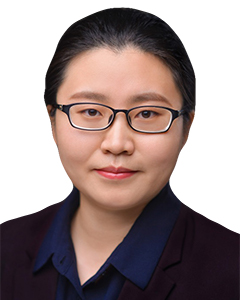The longstanding problems in intellectual property (IP) infringement cases, such as the plaintiff’s difficulty in producing evidence, and the long trial period, constantly push forward the renewal of court judgment methods and trial modes. Provisional injunction, as an effective instrument to stop infringement in time and avoid irreparable loss for right holders, has been increasingly adopted in judicial practice.

Partner
Yuanhe Partners
In recent years, some courts have begun to try to apply the partial judgment, as provided in the Civil Procedure Law, into the trial of IP infringement litigation. A partial judgment is entered by a court making a judgment, first on the claim to stop infringement on the basis of finding out the infringement facts, while leaving the remaining claims that separate from the said claim, which require a higher standard of proof, to be settled in following trial procedures.
On 26 April 2019, Hangzhou Intermediate People’s Court applied both partial judgment and provisional injunction in the case of Legend of Moon (Lan Yue Chuan Qi) v Martial Master of Blaze (Lie Yan Wu Zun) for game copyright infringement, creating a new mode of remedy.
In IP infringement litigation, the right holder generally seeks a timely stop to the other party’s infringement, avoiding further losses, and also hopes the court deliberately considers all its claims and orders a higher amount of damages. In such cases, evidence organisation of infringement and damages is relatively independent from fact determination, which provides space for the application of provisional injunction and partial judgment.
The Opinions of the Supreme People’s Court on Strengthening the Punishment on Intellectual Property Infringement according to Law, issued on 14 September 2020, provide that, “if the party concerned applies for partial judgment to stop the infringement, and for provisional injunction at the same time, in IP infringement litigation, the court shall examine them in time according to law”.

Associate
Yuanhe Partners
However, as for other issues like the specific considerations of the examination, and whether provisional injunction and partial judgment can be applied at the same time, and whether there is a sequence of application, the opinions fail to answer.
Regarding their function, both the provisional injunction and the partial judgment can force the infringer to stop the infringement as soon as possible, and improve the efficiency of dispute resolution, but they have their own emphasis on the timeliness of remedy and the certainty of legal effect.
Provisional injunction is a prior remedy before or during litigation, which is relatively fast in procedure, especially in case of an emergency. The issuance of a provisional injunction does not require a formal trial, but only requires examination of the stability of right basis, whether the right holder will suffer irreparable losses, and the influence of the injunction on the respective interests of both parties and the public interest.
Partial judgment is a substantive judgment made on ascertained facts, and is as binding as the final decision of the whole case. If the parties refuse to accept the partial judgment, they can appeal. Partial judgment can ensure the plaintiff gets a timely remedy to stop the infringement, and effectively improve the effect of right protection.
It is also beneficial to urge the parties to actively prove and defend the problem of damages when the infringement judgment is clear, and it may, serving as an instrument in a patchwork of diversified dispute resolutions, lead to a negotiation between parties for the settlement of damages.
Due to the different circumstances of the case, and the litigant’s own litigation purpose, provisional injunctions and partial judgments can be complementary to some extent. On the one hand, in some major and complicated cases, when the court is prudent about granting a provisional injunction, a partial judgment can be used as a powerful complement. In such cases, the court will first fix the facts of infringement, and make partial judgment to provide a timely remedy for the right holder.
On the other hand, when the party concerned appeals against a partial judgment and refuses to stop the infringement, the interests of the right holder may still face irreparable damage, so a provisional injunction still has its merits.
In the case of Valeo Systemes D’Essuyage v Xiamen Lucas Auto Parts, a dispute over infringement of the invention patent of “wiper connector and corresponding connecting device of motor vehicles”, under the circumstances that Shanghai Intellectual Property Court, the first-instance court, has made a judgment on the determination of infringement, the Supreme People’s Court recognised the value of the plaintiff’s application for a provisional injunction in the second instance, but pointed out that if the court of second instance could make a final judgment within the time limit for examination of provisional injunction, it would not be necessary to grant a provisional injunction.
In recent years, the applicable scope of provisional injunctions in IP infringement cases has been expanding. On one hand, the examination on necessity of a provisional injunction is sometimes relatively loose. On the other hand, because the possibility of the court’s determination of non-infringement is extremely low after the court makes a provisional injunction judgment, the examination on provisional injunction without formal trial procedure actually plays an important role in guiding the judgment on the “qualitative” part of the case, which conflicts with the role of partial judgment.
On the contrary, partial judgment engages in the field of IP litigation later, which means that the number of partial judgment cases is relatively small, but also the related rules are not mature enough – “partial facts ascertained” is necessary, but not sufficient, for ordering a partial judgment.
With regard to the application of partial judgment and provisional injunction in future IP trial practice, it is necessary to start from the rules, to further refine and clarify the relationship between provisional injunction and partial judgment in both procedural and substantial examination, especially the specific applicable conditions and initiation methods of partial judgments.
Wang Yaxi is a partner and Wu Yue is an associate at Yuanhe Partners

58F, Fortune Financial Center (FFC)
5 Dongsanhuan Zhonglu, Chaoyang District
Beijing 100020, China
Tel: +86 10 5733 2388
Fax: +86 10 5733 2399
E-mail:






















